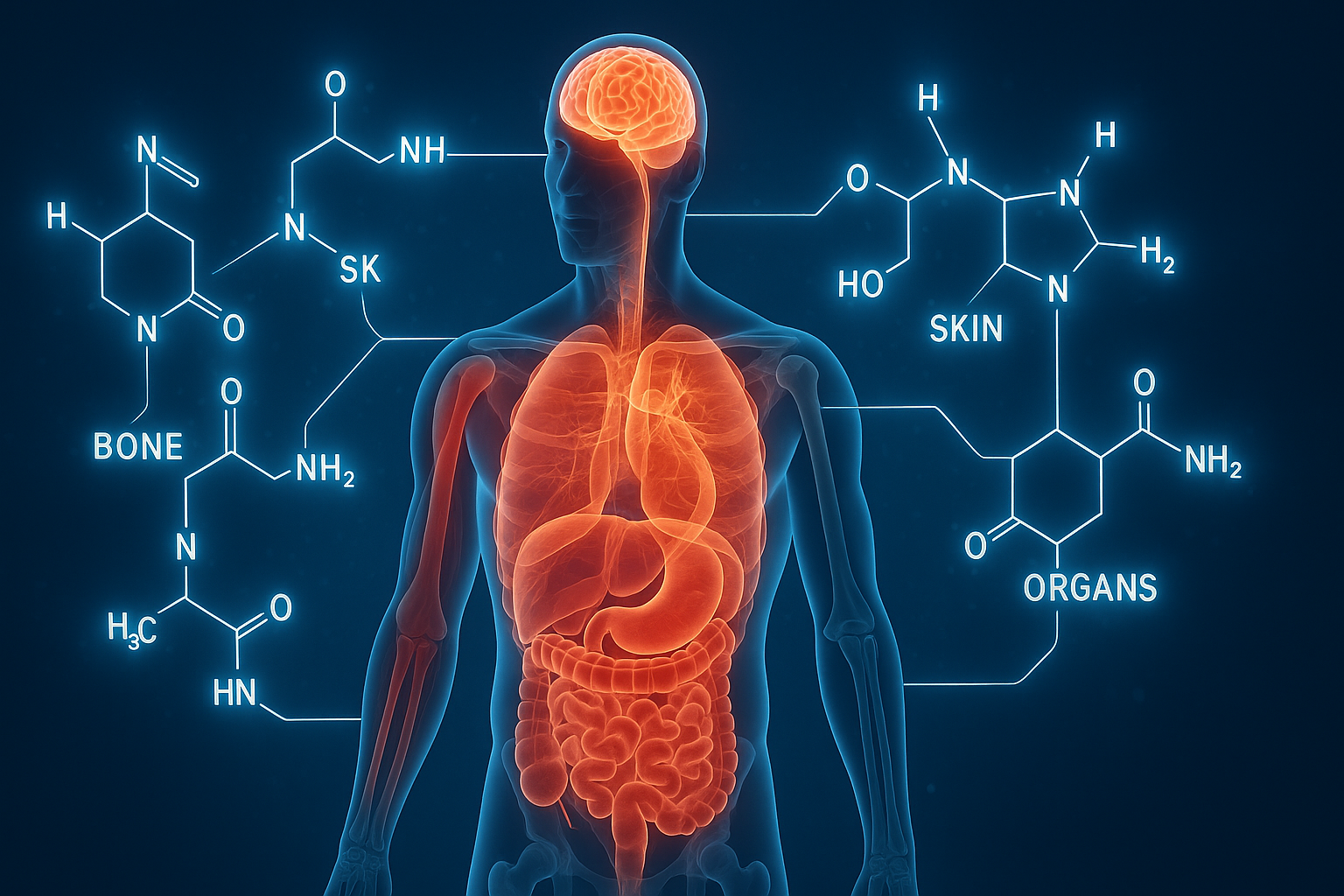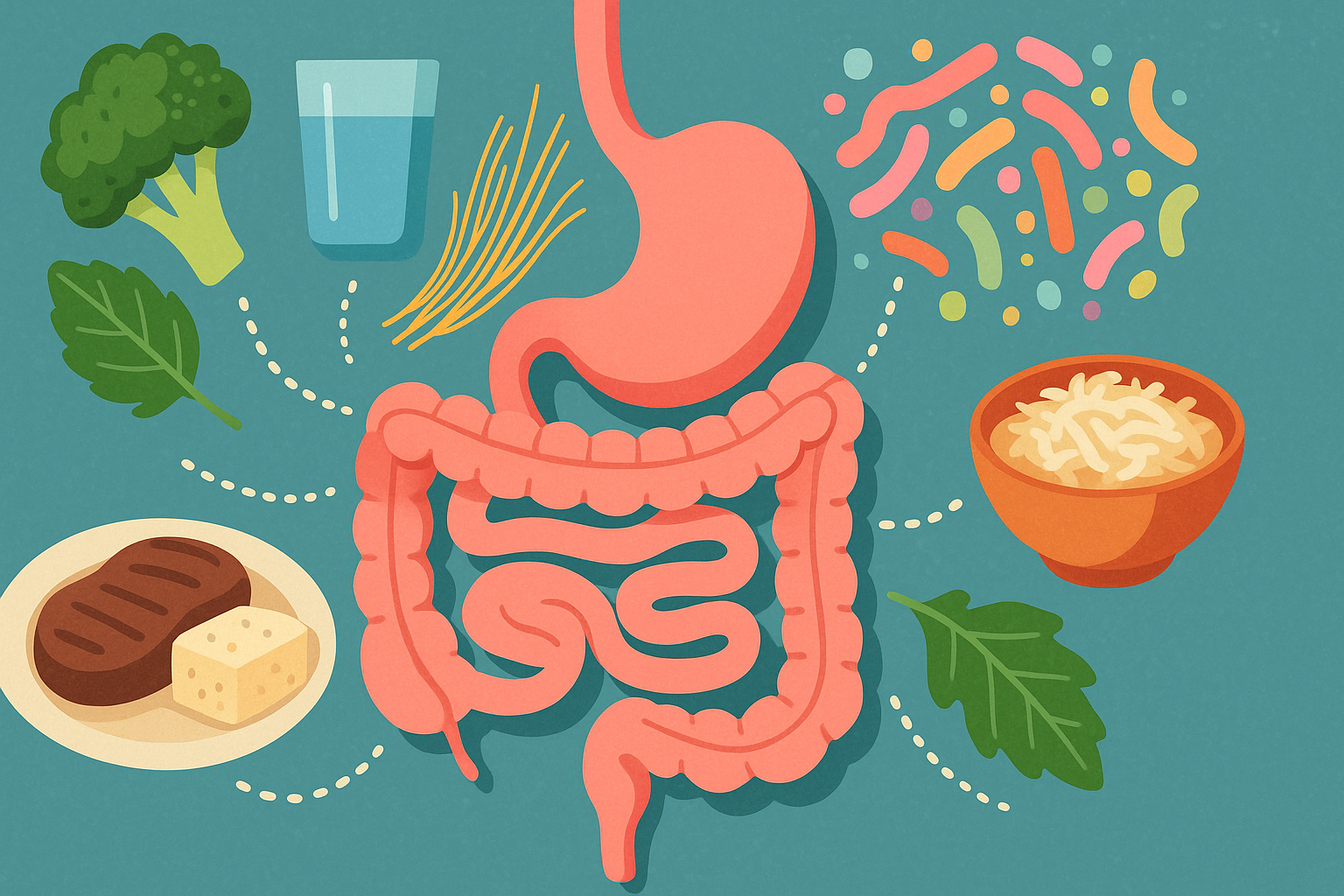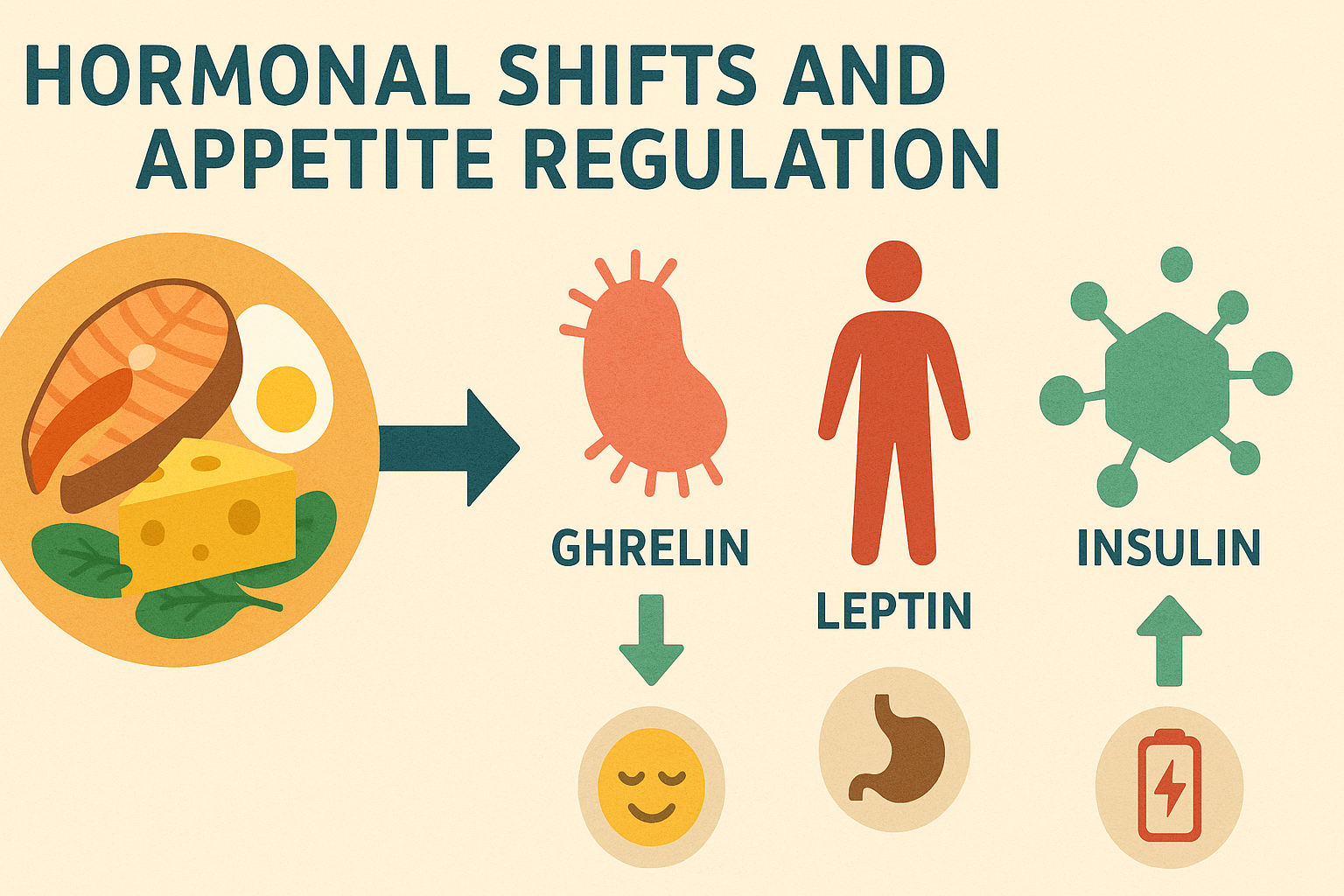High-protein diets have long been lauded for their ability to support muscle gain, fat loss, and overall metabolic improvement, yet few dietary transitions spark as much personal transformation as the switch to a protein-rich lifestyle. Whether you are beginning this nutritional path for weight loss, fitness enhancement, or metabolic health, the differences between the before and after protein diet experience can be striking and far-reaching. By understanding the physiological and psychological shifts that occur with this dietary change, readers can make more informed, intentional choices about their nutritional journey.
You may also like : The Ultimate Guide to Choosing a High Protein Diet Name That Fits Your Goals
Protein, as a macronutrient, serves foundational roles in nearly every biological function—from repairing tissues and synthesizing enzymes to supporting immune defense and hormonal balance. For individuals embarking on a 1 month high protein diet, results often range from visible physical changes to subtle shifts in energy, focus, and hunger regulation. But to truly appreciate the scope of these transformations, it’s essential to look beyond surface-level metrics and dive into the holistic implications of high-protein nutrition. This article unpacks those changes in full detail, examining the before and after protein diet landscape with depth, clarity, and expert insight.

Understanding Protein’s Central Role in the Body
Protein is more than just a tool for bodybuilders. It is a structural component of muscles, bones, skin, and internal organs, playing an indispensable role in maintaining bodily function and vitality. Amino acids, the building blocks of protein, are required to carry out a range of essential processes, including neurotransmitter production, hormone synthesis, and cellular repair. When protein intake is low, these systems falter. Conversely, increasing protein consumption can initiate a cascade of benefits that go far beyond aesthetics.
In the average Western diet, protein intake is often adequate in quantity but lacking in quality and distribution. Many people consume most of their daily protein during dinner, missing opportunities to nourish their bodies earlier in the day. When transitioning to a high-protein diet, individuals often begin by rebalancing their meals across the day, improving satiety and metabolic consistency. This change alone can significantly influence hunger patterns, energy levels, and muscle preservation—particularly for those also engaged in resistance training or endurance exercise.
Moreover, protein is the most thermogenic macronutrient, meaning it requires more energy to digest than fats or carbohydrates. This metabolic demand can translate into a modest increase in calorie expenditure, supporting weight management goals. It’s no surprise that individuals often observe meaningful improvements in body composition and fat distribution as part of their 1 month high protein diet results.

The Metabolic Impact: Fat Loss, Muscle Retention, and Energy Regulation
One of the most compelling transformations associated with a high-protein diet is its impact on body composition. In the “before and after protein diet” comparison, few changes are as immediately evident as reductions in body fat and improvements in lean muscle mass. While total weight loss may vary, the qualitative difference in physical form can be dramatic.
This shift is largely due to protein’s unique ability to preserve lean muscle during periods of caloric restriction. Unlike crash diets that strip both fat and muscle indiscriminately, protein-centered diets protect muscle tissue while promoting lipolysis (fat burning). This creates a more sustainable, health-enhancing form of weight loss that avoids the metabolic slowdown commonly associated with low-calorie diets.
Additionally, high-protein diets help stabilize blood sugar levels, particularly when carbohydrates are moderated or replaced with fiber-rich alternatives. This stabilization leads to fewer energy crashes, reduced cravings, and improved cognitive clarity. Many individuals report enhanced focus, motivation, and productivity within the first few weeks of adopting a high-protein approach. In fact, some of the most consistent 1 month high protein diet results include not only reduced waist circumference but also increased daily performance and mental resilience.

The Psychological Transformation: Mood, Cravings, and Cognitive Benefits
Beyond the physical, the psychological shift from before and after protein diet adoption is significant. Initially, those unfamiliar with high-protein eating may find the transition challenging—especially if they previously relied heavily on refined carbohydrates or sugary snacks. However, as the body adjusts to stable blood glucose levels and sustained satiety, many report a profound reduction in mood swings, impulsive eating, and emotional hunger.
This improvement in mood stability is likely linked to protein’s influence on neurotransmitter synthesis. Amino acids like tryptophan and tyrosine serve as precursors for serotonin and dopamine, two key chemicals involved in emotional regulation and reward processing. When protein intake is sufficient and balanced, these neurotransmitters are produced more efficiently, leading to greater emotional equilibrium and reduced anxiety.
Cognitive enhancements are also frequently cited in anecdotal and clinical accounts. High-protein diets may enhance brain function through more consistent glucose supply, improved neurotransmitter support, and reduced inflammatory markers. This can translate into better memory retention, quicker problem-solving, and increased mental stamina. For many, the cognitive benefits alone are enough to justify continuing the diet beyond the initial 30 days, confirming that the before and after protein diet transition offers more than superficial rewards.

Digestive Adjustments and Gut Health Considerations
While the benefits of protein are clear, it’s important to acknowledge that the body often undergoes an adjustment period when shifting from a standard diet to one that prioritizes protein. During this adaptation phase, individuals may notice temporary changes in digestion, such as bloating or increased bowel frequency. These responses are typically linked to changes in food volume, fiber intake, and the type of protein consumed.
Animal-based proteins such as beef, poultry, and dairy are rich sources of complete amino acids but can be harder to digest for some individuals, especially when consumed in large amounts without adequate hydration or fiber. On the other hand, plant-based protein sources, while often easier on digestion, can lack one or more essential amino acids, requiring strategic meal planning to ensure a complete amino acid profile.
Integrating fermented foods, fiber-rich vegetables, and adequate water intake can help mitigate digestive discomfort during the early stages of a high-protein regimen. Over time, the gut microbiome often adapts favorably to increased protein intake, particularly when balanced with dietary diversity. In this way, the digestive challenges that may occur early on can give way to improved gut function, better nutrient absorption, and reduced bloating—contributing to the overall improvement seen in before and after protein diet comparisons.

Hormonal Shifts and Appetite Regulation
Another fascinating dimension of the high-protein transition is the hormonal shift that occurs with consistent protein intake. Hormones such as ghrelin (the hunger hormone) and leptin (the satiety hormone) play pivotal roles in regulating appetite and food intake. Protein has been shown to suppress ghrelin levels more effectively than carbohydrates or fats, leading to a longer-lasting feeling of fullness and reduced overall calorie consumption.
Leptin sensitivity also appears to improve with weight loss and metabolic regulation, particularly when muscle mass is preserved or increased. This dual impact helps recalibrate the body’s natural hunger cues, making it easier to avoid overeating and sustain long-term dietary changes. Many individuals experience fewer episodes of emotional eating or late-night snacking after adopting a high-protein lifestyle, reinforcing the psychological and behavioral benefits discussed earlier.
Moreover, insulin sensitivity often improves with high-protein diets, especially when carbohydrate intake is managed appropriately. This change is crucial for individuals at risk for metabolic syndrome, prediabetes, or type 2 diabetes. Enhanced insulin function promotes better glucose management, reduces fat storage, and supports cellular energy production, creating a metabolic environment conducive to sustainable health improvements. Thus, the hormonal regulation seen in before and after protein diet evaluations underscores the systemic nature of this transformation.

Sustainable Weight Maintenance and Lifestyle Habits
Perhaps the most underrated benefit of transitioning to a high-protein diet is its contribution to long-term weight maintenance. While rapid weight loss often garners the most attention, the real challenge lies in sustaining those results without falling back into old habits. Here, protein proves to be an invaluable ally.
Because of its satiating effect and muscle-preserving properties, protein makes it easier to maintain weight loss over time. Unlike restrictive fad diets that leave individuals feeling deprived or fatigued, a protein-rich eating pattern supports consistent energy and mood, making it more likely that healthy habits will stick. This is especially relevant when examining 1 month high protein diet results as a gateway to lifelong change, rather than a temporary fix.
Moreover, the act of planning, preparing, and consuming protein-rich meals often instills a greater sense of nutritional awareness and autonomy. As individuals begin to see and feel the benefits of their efforts, they are more likely to double down on positive behaviors such as meal prepping, mindful eating, and regular physical activity. This behavioral reinforcement plays a critical role in sustaining the improvements seen in before and after protein diet transformations.
Realistic Expectations: Individual Variability and Personalized Goals
While the benefits of high-protein diets are well-supported, it is important to emphasize that results may vary based on individual factors such as age, sex, activity level, metabolic health, and preexisting conditions. Some people may experience rapid improvements in weight, energy, and performance, while others may require more time to adapt or refine their macronutrient ratios for optimal effect.
For example, a sedentary individual looking to lose fat may benefit from a different protein-to-carbohydrate ratio than an athlete seeking muscle gain. Similarly, older adults often require higher protein intake to counteract age-related muscle loss (sarcopenia), while those with kidney conditions may need to moderate intake under medical supervision. In every case, personalization and monitoring are key.
Tracking metrics such as body composition, energy levels, hunger cues, and mental clarity can provide valuable insights into the effectiveness of the diet. Journaling or working with a registered dietitian can help identify patterns and adjust variables as needed. Ultimately, the most impactful before and after protein diet stories are those grounded in realism, consistency, and a willingness to learn and evolve.
Comparing the First Month to Long-Term Progress
Initial results from a high-protein diet can be impressive. Within the first month, many individuals report reduced bloating, visible changes in muscle tone, improved energy, and more stable mood. These 1 month high protein diet results provide powerful motivation to continue, especially when paired with increased performance at the gym or reduced reliance on sugar and processed foods.
However, it’s important not to stop there. Long-term adherence to a high-protein lifestyle offers cumulative benefits that build on these early wins. Over time, individuals often report lower rates of illness, improved hormonal balance, stronger immune function, and better sleep quality. These changes may unfold more gradually but are equally meaningful in terms of healthspan and quality of life.
Moreover, sustained protein intake supports ongoing muscle development and fat redistribution, leading to continued improvements in posture, strength, and metabolism. Many people discover that their initial goals evolve into broader wellness aspirations—from improving athletic performance to aging more gracefully. As such, the most profound changes from before and after protein diet adjustments often unfold over months or even years.
Protein and Immune Function: An Overlooked Connection
Among the lesser-known benefits of a high-protein diet is its impact on immune function. Proteins are integral to the synthesis of antibodies, cytokines, and other immune-modulating molecules. When the body lacks sufficient protein, it may struggle to mount effective immune responses, leading to prolonged infections or diminished resistance.
In the context of before and after protein diet changes, individuals often report fewer illnesses, faster recovery from minor infections, and enhanced resilience during periods of stress or intense physical activity. This is especially relevant for athletes or individuals with demanding lifestyles, as they are more susceptible to transient immunosuppression. A steady intake of high-quality protein can reinforce immune defenses, potentially lowering the incidence of sickness and enhancing long-term vitality.
Furthermore, amino acids like glutamine and arginine play specific roles in lymphocyte proliferation, wound healing, and inflammation control. These benefits may not be immediately visible but accumulate over time, contributing to the broader sense of well-being that accompanies high-protein living.
The Role of Protein in Detoxification Pathways
Another often overlooked aspect of protein’s function is its involvement in hepatic detoxification. The liver is the body’s primary detox organ, and its efficiency depends heavily on the availability of certain amino acids, especially methionine, cysteine, and glycine.
These amino acids are required to produce glutathione, one of the most powerful intracellular antioxidants. Glutathione supports the detoxification of environmental toxins, metabolic byproducts, and pharmaceutical compounds. Individuals who previously followed low-protein diets may have impaired detox pathways without realizing it, which can lead to fatigue, brain fog, and unexplained inflammation.
In the after phase of a protein diet transition, enhanced liver function is often evidenced by increased energy levels, clearer skin, and improved digestive regularity. Although these outcomes may not always be directly attributed to protein by the layperson, they highlight the essential role protein plays in the body’s internal housekeeping processes.

High-Protein Diets and Aging: Preserving Function and Quality of Life
As the global population ages, preserving muscle mass and functionality becomes increasingly critical. Sarcopenia, or age-related muscle loss, begins as early as the fourth decade of life and accelerates without sufficient dietary protein and physical activity. This muscle deterioration affects mobility, balance, metabolic rate, and even cognitive performance.
In this context, before and after protein diet changes can be life-altering for older adults. Increasing protein intake—particularly in combination with resistance training—has been shown to enhance muscle protein synthesis, improve strength, and reduce the risk of falls and fractures. Additionally, protein supports the maintenance of bone density by stimulating the production of insulin-like growth factor 1 (IGF-1) and enhancing calcium absorption.
From a functional aging standpoint, these benefits can translate to prolonged independence, reduced healthcare costs, and improved quality of life. Older adults who previously consumed inadequate protein may notice increased energy, confidence, and social participation after making the dietary shift.
Cultural and Culinary Dimensions of Protein Intake
Protein is not only a biological necessity but also a cultural touchstone. How we consume protein, what sources we choose, and how we prepare it are deeply influenced by cultural identity, culinary traditions, and socioeconomic factors. Understanding these dynamics is crucial when discussing before and after protein diet experiences across diverse populations.
For example, in many Asian cultures, plant-based proteins such as tofu, tempeh, lentils, and mung beans are staples, often integrated into flavorful and balanced meals. In contrast, Western diets may rely more heavily on red meat, poultry, and dairy products. These cultural differences can affect not only the nutritional profile of a high-protein diet but also its accessibility, sustainability, and emotional resonance.
For individuals transitioning to a higher protein intake, incorporating culturally familiar protein sources can increase adherence and enjoyment. Learning new cooking techniques, exploring global cuisines, and experimenting with protein-rich dishes can transform the diet from a rigid plan into a creative, flavorful lifestyle. These culinary shifts can reshape the emotional narrative of food from restriction to celebration, enriching the overall before and after protein diet journey.
Navigating Challenges and Plateaus
Despite its many benefits, a high-protein diet is not without challenges. Common hurdles include monotony, meal fatigue, social constraints, and occasional digestive discomfort. Overcoming these obstacles requires creativity, planning, and flexibility.
Incorporating a variety of protein sources—including lean meats, legumes, dairy, tofu, and protein powders—can help prevent boredom and provide a wider spectrum of nutrients. Spices, marinades, and global culinary traditions can also reinvigorate the palate, making it easier to stick with the plan. Additionally, learning to navigate social settings, restaurant menus, and travel scenarios can increase confidence and reduce the likelihood of derailment.
For those experiencing weight loss plateaus or reduced motivation, adjusting training protocols, meal timing, or macronutrient ratios may be necessary. Periodic reassessment and re-engagement with one’s goals can reignite enthusiasm and restore progress. Importantly, the “after” phase of a protein diet is not a destination but an ongoing evolution, requiring maintenance, reflection, and adjustment over time.
Expert Recommendations for Maximizing Results
To optimize the benefits of a high-protein diet, several evidence-based strategies are recommended. First, aim to distribute protein intake evenly across the day, targeting 20-40 grams per meal depending on body weight and activity level. This approach supports muscle protein synthesis and helps regulate appetite throughout the day.
Second, prioritize whole food sources of protein over processed options whenever possible. While protein bars and shakes can be convenient, they should supplement rather than replace nutrient-dense meals. Whole foods provide synergistic nutrients—such as iron, zinc, and B vitamins—that support optimal health and performance.
Third, combine protein intake with resistance or strength-based exercise to maximize body composition changes. Physical training stimulates muscle growth, while dietary protein provides the necessary substrates for repair and adaptation. Together, they create a powerful feedback loop for fat loss, strength gain, and metabolic resilience.
Finally, stay hydrated, prioritize sleep, and manage stress, as these lifestyle factors significantly influence dietary success. High-protein diets may increase water needs due to nitrogen excretion, while poor sleep and chronic stress can sabotage even the best dietary intentions. By adopting a holistic approach, the results from before and after protein diet changes can be maximized and sustained.
Frequently Asked Questions (FAQ) on High-Protein Diet Transformations
1. How can psychological resilience influence 1 month high protein diet results?
Psychological resilience plays a critical role in shaping 1 month high protein diet results, especially during the initial adjustment phase. Individuals who exhibit higher resilience tend to manage dietary changes, cravings, and unexpected setbacks—such as social events or travel—more effectively. This mental fortitude helps maintain consistency, which directly influences fat loss, muscle retention, and overall energy levels. Moreover, studies show that individuals who set short-term behavioral goals alongside physical goals are more likely to sustain a high-protein diet. Cultivating this resilience through mindfulness practices or cognitive-behavioral strategies may amplify both physical and emotional outcomes after one month.
2. What social dynamics impact your before and after protein diet journey?
The before and after protein diet transformation is not solely a physiological journey—it is also deeply shaped by social dynamics such as family eating patterns, peer influence, and workplace food environments. Supportive networks can enhance accountability, making it easier to follow the diet consistently. Conversely, social pressure to indulge in carb-heavy or processed foods can derail progress, especially in communal or celebratory settings. In some cases, individuals find it helpful to involve close friends or partners in their high-protein eating plan, which encourages adherence and reinforces positive feedback loops. Building a social ecosystem that aligns with one’s dietary goals significantly enhances the likelihood of long-term transformation.
3. What nutrient timing strategies enhance 1 month high protein diet results?
Strategic nutrient timing can greatly enhance 1 month high protein diet results by optimizing metabolism and muscle protein synthesis. Consuming protein within 30 minutes post-exercise improves muscle repair, while spreading protein intake evenly across meals helps prevent catabolism throughout the day. Recent data suggest that consuming a high-protein breakfast not only reduces mid-day cravings but also stabilizes blood glucose for improved cognitive performance. Pre-sleep casein protein, a slow-digesting form, has shown benefits for overnight muscle repair in both athletes and sedentary individuals. These timing methods add depth to protein diet strategies beyond mere macronutrient tracking.
4. How does a high-protein diet influence sleep and stress response?
Though not commonly discussed, a high-protein diet significantly affects the sleep-stress cycle. Tryptophan-rich proteins like turkey and cottage cheese may enhance serotonin production, promoting relaxation and improving sleep latency. Better sleep quality, in turn, improves cortisol regulation, lowering stress reactivity during the day. However, excessively high protein—particularly in evening meals—can sometimes lead to digestive discomfort or increased thermogenesis, which may interrupt sleep. To optimize sleep on a high-protein plan, it’s important to balance evening intake with easily digestible proteins and calming nutrients like magnesium. Sleep consistency has even been linked to more favorable 1 month high protein diet results.
5. What role does genetic variability play in before and after protein diet outcomes?
Emerging research highlights how genetic variability—especially in genes related to protein metabolism, appetite regulation, and insulin sensitivity—can affect before and after protein diet outcomes. For example, individuals with polymorphisms in the FTO gene may experience slower fat loss despite increased protein intake. Similarly, those with enhanced mTOR signaling may respond more dramatically to protein-induced muscle hypertrophy. Genetic testing is becoming more accessible and could help personalize high-protein plans for greater efficacy. Understanding one’s genetic predispositions offers an opportunity to optimize macronutrient ratios and avoid blanket dietary approaches that may yield suboptimal results.
6. Why is digestive health crucial during a 1 month high protein diet?
Digestive efficiency is often overlooked in discussions about 1 month high protein diet results, yet it’s a vital factor. A sudden increase in protein—especially from animal sources—can challenge gut flora balance and lead to symptoms like bloating, constipation, or sluggish digestion. Introducing fermented foods, high-fiber vegetables, and digestive enzymes can mitigate these issues and support protein assimilation. Moreover, optimizing hydrochloric acid levels in the stomach improves the breakdown of complex proteins, enhancing nutrient absorption. Gut health doesn’t just influence digestion; it affects mood, energy levels, and immune function, all of which impact dietary adherence and transformation success.
7. How can travel and lifestyle disruptions be managed during a high-protein diet?
For those pursuing meaningful before and after protein diet transformations, travel and social events often pose unique challenges. Planning ahead by packing portable protein sources—such as jerky, protein powder, or canned tuna—can prevent reliance on low-nutrient fast food. Hotel minibars and airport food courts rarely align with high-protein goals, making prior research and meal prep invaluable. Technology can also assist: nutrition-tracking apps and GPS-enabled restaurant locators help maintain dietary targets on the move. Emphasizing flexibility over rigidity helps sustain long-term adherence, reducing stress and promoting better psychological outcomes.
8. What lesser-known signs indicate success in your 1 month high protein diet results?
While scale weight and waist measurements are common metrics, several nuanced signs can indicate success in your 1 month high protein diet results. Improved satiety between meals, enhanced focus, reduced sugar cravings, and better skin texture often emerge as early indicators of metabolic adaptation. Additionally, increased strength or endurance during exercise can reflect optimized muscle protein synthesis. Some individuals even report improved mood stability and fewer energy crashes. These markers reveal that success transcends aesthetics—physiological resilience and mental clarity are just as valid signs of a successful high-protein transition.
9. How do hormone levels adapt in the before and after protein diet transformation?
High-protein diets can modulate hormones such as leptin, ghrelin, and insulin, all of which influence appetite and fat metabolism. During the early stages, protein-induced satiety reduces ghrelin levels, curbing hunger and emotional eating. Over time, leptin sensitivity may improve, making the body more responsive to its natural fullness signals. Insulin regulation also stabilizes, particularly in those reducing refined carbohydrate intake alongside protein elevation. These hormonal shifts are fundamental to before and after protein diet improvements, particularly in individuals managing insulin resistance, metabolic syndrome, or PCOS. Long-term success often hinges on the body’s endocrine response to sustained dietary changes.
10. Can a high-protein diet be maintained sustainably beyond the 1 month mark?
Yes, a high-protein diet can be maintained sustainably, but doing so requires strategic adjustments. After the initial 1 month high protein diet results are achieved, some individuals transition to a cyclical or targeted approach—such as incorporating more plant-based proteins or rotating protein sources to prevent palate fatigue. Sustainability also depends on aligning the diet with long-term goals: for muscle gain, higher protein may be sustained; for maintenance, moderate levels may suffice. Social flexibility, affordability, and environmental concerns often drive long-term adherence. Incorporating these dimensions helps maintain the before and after protein diet transformation without compromising lifestyle balance or dietary enjoyment.
Conclusion: Embracing the Full Spectrum of Protein Diet Benefits
The journey from before and after protein diet changes is one of multidimensional transformation. What begins as a shift in macronutrient intake often becomes a complete reimagining of one’s relationship with food, energy, and wellness. The physical changes—from fat loss to muscle gain—are certainly compelling, but it is the internal shifts in metabolism, mood, and mindset that offer the most lasting rewards.
By understanding the science behind protein’s impact and tailoring your approach to fit personal needs, the transition becomes less about short-term outcomes and more about long-term empowerment. Whether you’re inspired by 1 month high protein diet results or aiming to build a foundation for lifelong vitality, this nutritional strategy holds transformative potential when implemented with care, commitment, and clarity.
In the end, protein is more than just a nutrient; it is a catalyst for change. Embrace it not as a restriction, but as a tool for thriving—physically, mentally, and emotionally. With the right approach, the before and after protein diet narrative becomes more than a dietary experiment; it becomes a sustainable, empowering lifestyle.
Further Reading:
Clinical Evidence and Mechanisms of High-Protein Diet-Induced Weight Loss
4 Things That Happened When I Tripled My Protein Intake For A Month On Whole30
After Starting A Low-Carb, High-Protein Diet, I Lost 85 Pounds And Got Rid Of So Many Cravings





